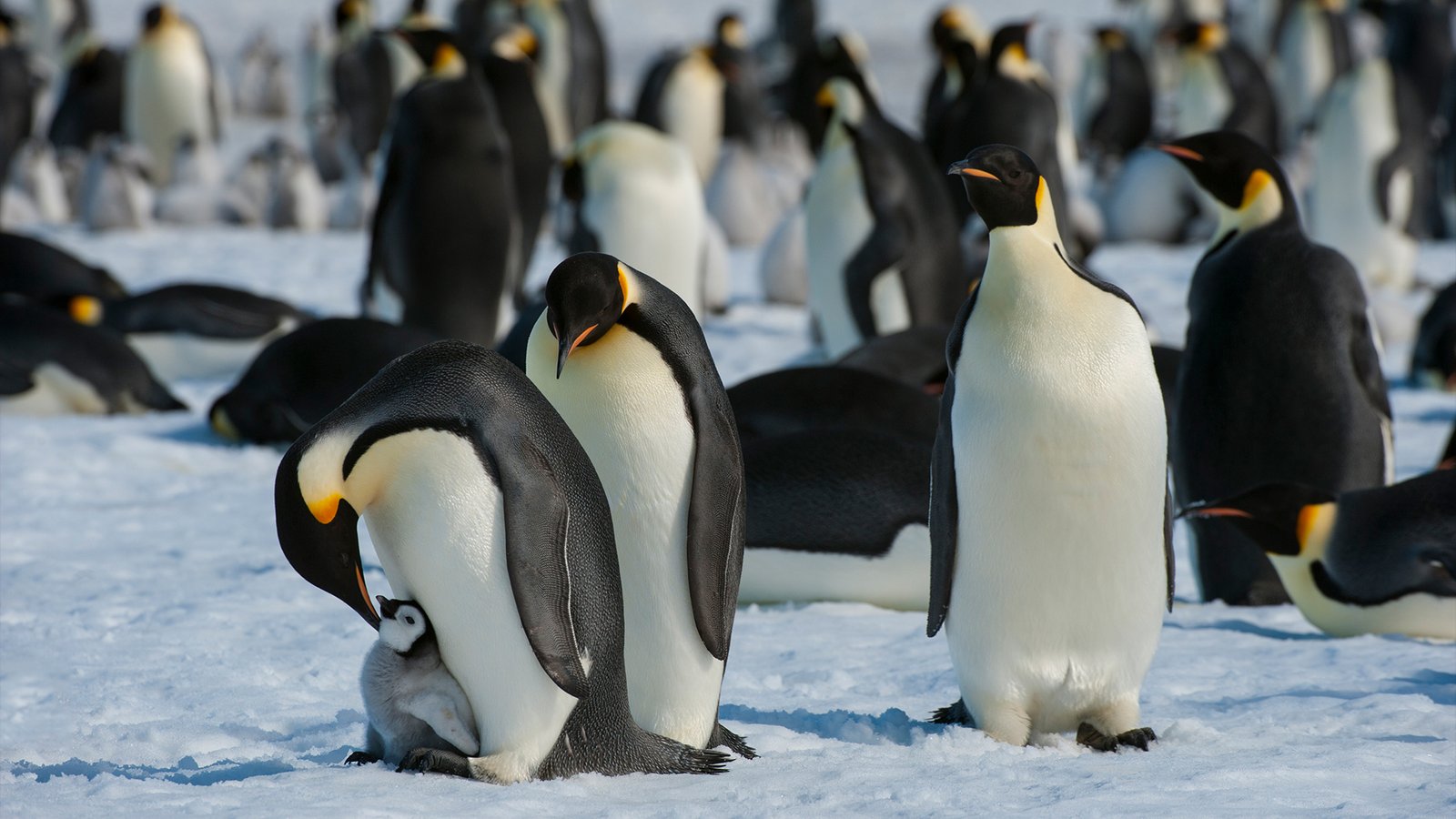Four new emperor penguin colonies have been identified in Antarctica from satellite imagery recently.
About Emperor Penguin:
- It is the largest of all the different kinds of penguin species.
- Scientific Name: Aptenodytes forsteri
- Distribution:
- They are found throughout the Antarctic continent and sub-Antarctic islands.
- In breeding months (April to November), emperor penguin colonies are found between 66° and 78° south latitude along the Antarctic coastline.
- Habitat: It is the most ice-adapted of any penguin species, inhabiting pack ice and surrounding marine areas. They spend their entire lives on Antarctic ice and in its waters.
- Features:
- Adults are coloured black and white with areas of orange and yellow on the head, neck, and breast.
- They are approximately 120 cm tall and weigh around 40 kg.
- They have wingspans ranging from 76 to 89 cm.
- They gain and lose weight rapidly during breeding and feeding seasons. On average, females tend to weigh less than males.
- They have two layers of feathers, a good reserve of fat, and proportionally smaller beaks and flippers than other penguins to prevent heat loss.
- They also huddle close together in large groups to keep themselves and each other warm.
- They are capable of diving to depths of approximately 550 metres (1,800 feet) in search of food; they are the world’s deepest-diving birds.
- They breed in the winter.
- Lifespan: 15 to 20 years
- Conservation Status:
- IUCN Red List: Near Threatened




